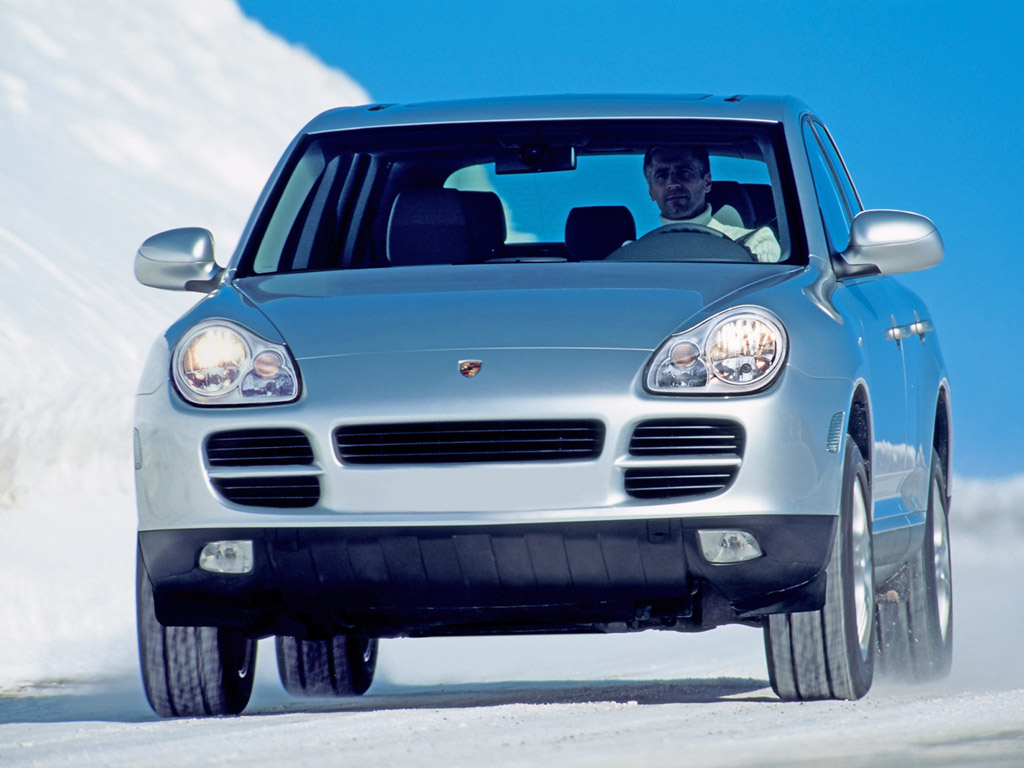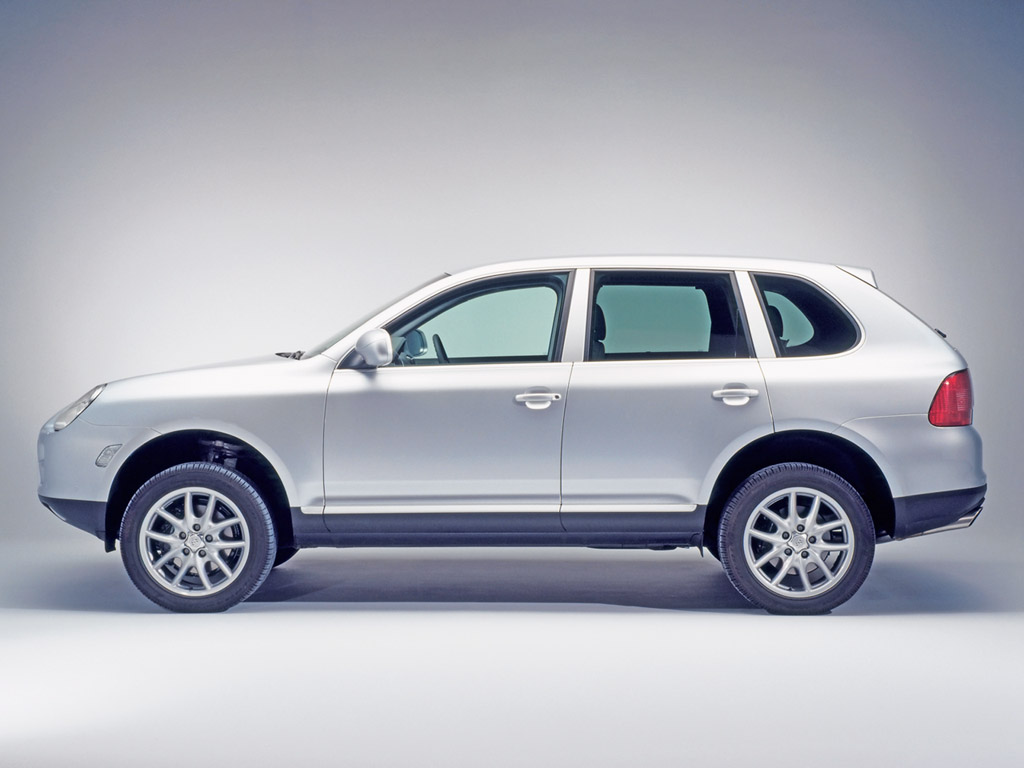2004 Porsche Cayenne
The newest Cayenne goes on sale January 10 in North American markets. Standard equipment includes the new V6 engine, a six-speed Tiptronic S transmission and such Porsche technologies as Porsche Stability Management and Porsche Traction Management, plus much more, including leather seating surfaces for five people and side-curtain airbags.
Base prices are $42,900 in the United States and $60,850 in Canadian dollars.
The Cayenne option list includes the Porsche Communication Management system that features a navigation system and Porsche’s new Advanced Offroad Technology Package, which also becomes available on the Cayenne S and Cayenne Turbo models.
Like the Cayenne S and Cayenne Turbo models, the 2004 Porsche Cayenne has the architecture of an SUV, but the same soul that is part of every Porsche. Thus Porsche Traction Management can claw its way up a rocky trail, but also provides sure-footed traction and control for high-speed lane changes.
The 2004 Porsche Cayenne has the room and the luxury that a family demands for its four-wheel-drive adventures – whether they involve wilderness trails, inclement weather conditions or a quick run to the drive-thru lane. It also provides the dynamic driving experience that Porsche’s enthusiast customers expect from each of their vehicles.
Except for its engine and a few other components, the 2004 Porsche Cayenne is identical in design and construction to the Cayenne S and Cayenne Turbo. The only visual clues to differentiate the new model from its siblings are its black-colored brake calipers, its standard, 10-spoke, light-alloy, 17-inch wheels, and a “Cayenne” script on its rear hatch without an “S” or “Turbo” suffix.
The 2004 Porsche Cayenne features a 3.2-liter V6 engine tuned by Porsche engineers to produce 247 horsepower (SAE) at 6,000 rpm and 228 pound-feet of torque, with that peak torque figure achieved all the way from 2,500 rpm to 5,500 rpm.
Working though the Tiptronic S transmission and Porsche’s four-wheel-drive systems, the V6 propels the 2004 Porsche Cayenne from a standing start to 62 miles per hour (100 km/h) in 9.7 seconds. The 2004 Porsche Cayenne’s top speed in track testing is 133 mph (214 km/h).
Other performance figures include 0-100 mph (160 km/h) in 25.0 seconds and a standing-start, one-kilometer (.62-mile) sprint in 30.8 seconds. The V6’s performance includes 15 city and 19 highway fuel economy figures (15.6 liters per 100 km city and 12.2 per 100 km highway in Canada). The 2004 Porsche Cayenne has a 26.4 gallon (100 liter) fuel tank.
With its 22.7-gallon fuel tank, the 2004 Porsche Cayenne has a range that exceeds 430 miles.
While the engine block is sourced from Volkswagen, which is Porsche’s partner in the construction of the Cayenne’s unit-body chassis, the 15-degree, 3.2-liter V6 engine has been extensively reworked by Porsche engineers. They designed an entirely new intake system for the engine, with two overhead camshafts and continuously variable intake valve timing. They also reworked the exhaust system to provide the sound that immediately identifies the Cayenne as a true Porsche.
Porsche engineers also designed modifications to the engine for towing, including the engine cooling system. To verify the Cayenne’s ability in extreme conditions, testing was done while pulling the maximum load (7,716 pounds or 3500 kg) in temperatures as high as 122 degrees Fahrenheit (50 degrees Celsius).
The powertrain and its belt-drive system also were designed and developed for the challenges Porsche Cayenne owners may face in extreme off-pavement driving. Thus the V6 operates smoothly while the Porsche Cayenne is driven through water as deep as 20 inches (500 mm) or at angles – uphill, downhill or side hill – as steep as 45 degrees.
Just like the Cayenne Turbo and Cayenne S, the 2004 Porsche Cayenne is equipped with a six-speed Tiptronic S transmission designed to provide an enhanced range of individual gear increments and to retain the driver’s option to shift gears manually by tipping the selector lever on the center console or simply by using switches on the steering wheel that can be activated by the driver’s thumbs.
The driver can press the upper portion of the thumb switch or tip the center console shift selector forward to advance the gears, or press the lower part of the thumb switch or tip the shift selector back to downshift.
One major advantage of the Tiptronic S is that it provides the driver with the option of intervening while the transmission is in automatic mode. The driver can move the thumb switch on the steering wheel and shift gears manually even though the gearshift selector lever in the center console remains in the automatic position. In such a case, the manual mode is activated for at least eight seconds, and this period is extended when the car is in “overrun” – for example, on a downhill grade, to capitalize on engine braking – or when the driver downshifts before the entrance to a curve and the car is under lateral acceleration as it negotiates the turn.



